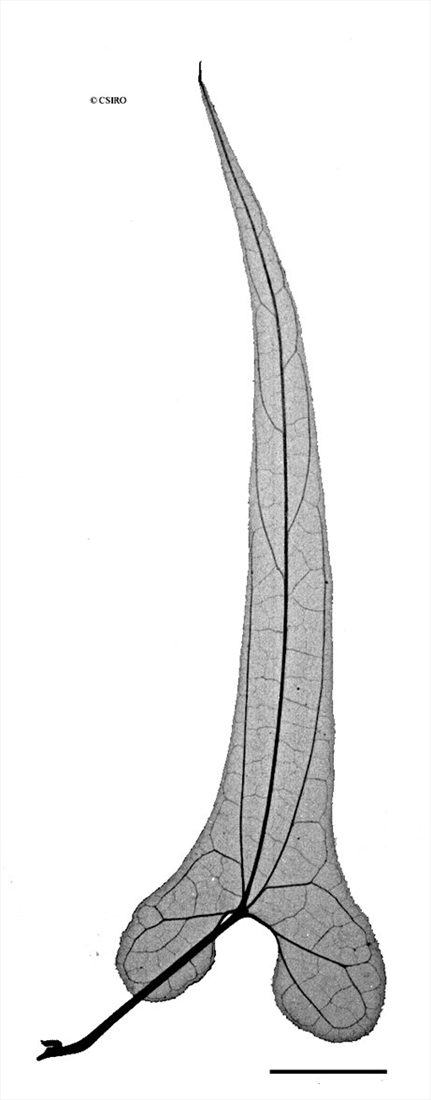Australian Tropical Rainforest Plants - Online edition
Aristolochia thozetii F.Muell.




Mueller, F.J.H. von (1861) Fragmenta Phytographiae Australiae 2(15): 167. Type: Rockhampton, QLD; A. Thozet; holo: MEL; ISO: G-DC.
Dutchmans Pipe
A slender vine not exceeding a stem diameter of 2 cm.
Leaf blades about 5-8.5 x 1.5-2.5 cm, bases ending in two large rounded lobes, petioles about 1.8-2.5 cm long. Leaves emit a strong odour when crushed.
Pedicel about 4 mm long. Perianth curved or geniculate, basal part inflated, narrowed into a tube about 5 mm long and then extending into a single lobe about 12 mm long. Stamens fused to form a structure around the style. Anthers sessile. Ovary glabrous about 4 mm long. Ovules numerous in each locule.
Fruits about 15-20 x 10-20 mm, longitudinally ribbed. Seeds dark brown, laterally compressed, pyriform in outline.
Features not available.
Occurs in NT (near Gove), CYP, NEQ and CEQ, to coastal central Queensland. Altitudinal range in northern Australia probably quite small, from sea level to about 750 m. Grows in vine thickets and monsoon forest, and also in open eucalypt forest.
Recorded as host plant for the larvae of the Redbodied Swallowtail (Atrophaneura polydorus queenlandicus) and the Big Greasy (Cressida cressida cressida). Ross & Halford (2007).





